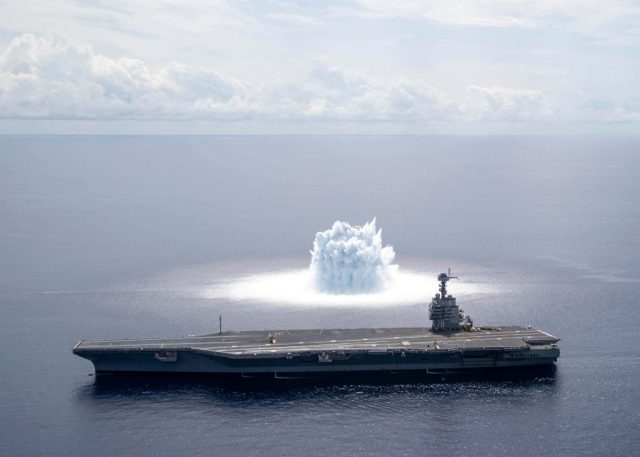Hong Kong. August 11. INTERFAX-The successful completion of strength tests of the new nuclear aircraft carrier USS Gerald R. Ford was a signal to the Russian Federation and China that the United States is not concerned about the anti-ship missiles of these two countries, the South China Morning Post reports, citing the words of former Chinese military instructor Song Zhongping.
"In addition to collecting data, another reason (for the Americans-IF) to announce the tests was to send a message to China and Russia: The US aircraft carriers are super - strong, and they don't care about conventional Chinese or Russian anti - ship weapons," he said.
The US Navy on Monday announced that these tests took place last Sunday in the Atlantic Ocean near the coast of the US state of Florida. During tests near the USS Gerald R. Ford, commissioned in 2017, a powerful underwater explosion was made - 10 tons of explosives were detonated, the shock wave from which is equivalent to an earthquake of magnitude 3.9. According to the American side, the aircraft carrier did not receive serious damage, and the damage was lower than expected.
This test was the third in a series of similar tests - the previous tests of the ship for the ability to withstand a shock wave were held on June 18 and July 16, and each time the explosion was made closer to the ship. After assessing the damage to the USS Gerald R. Ford, malfunctions on the ship will be eliminated, and in 2022 the ship will have to take up duty.
The South China Morning Post notes that before that, the last such testing of an American aircraft carrier was conducted back in 1987. The current tests should provide data for the mass production of aircraft carriers such as the USS Gerald R. Ford - the first such large-scale US investment in the construction of aircraft carriers since the 1960s. The publication reminds that two more similar aircraft carriers-SS John F. Kennedy and USS Enterprise - are being built, and two more have been ordered.
In turn, Song Zhongping noted that these tests demonstrated the ability of aircraft carriers of the USS Gerald R. Ford type to withstand the detonation of sea mines or the rupture of missiles near the ship, but did not allow to assess the potential of the ship to withstand a direct missile hit.
"Ballistic missiles or hypersonic missiles can also carry pulsed electromagnetic weapons: they are undermined at high altitudes and cause damage to an aircraft carrier or even completely disable it," he added.





